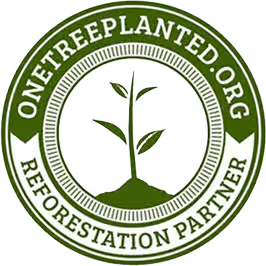Deadwood, often overlooked and underestimated, plays a crucial role in maintaining forest health and biodiversity. Far from being mere debris, deadwood serves as a vital component of forest ecosystems, supporting a wide array of life forms and contributing to various ecological processes. This article delves into the multifaceted significance of deadwood, exploring its contributions to wildlife, soil health, erosion control, carbon sequestration, and even cultural values.
Key Takeaways
- Deadwood is essential for recycling nutrients and fostering new growth in forest ecosystems.
- It provides critical habitats and feeding grounds for various wildlife species, including insects, birds, and mammals.
- Deadwood helps stabilize the forest floor, preventing soil erosion and maintaining water quality.
- By sequestering carbon, deadwood plays a role in mitigating climate change and its long-term impacts.
- Conservation efforts are necessary to protect deadwood, balancing human activity with the needs of forest ecosystems.
The Silent Symphony of Decay

Nature’s Recycling Process
In the heart of the forest, deadwood embarks on a journey of transformation. This process is orchestrated by a myriad of organisms, particularly microorganisms, working in harmony. The decomposition of deadwood occurs in sequential stages, each playing a vital role in the forest’s health. The length of this process is positively correlated with the diameter of the deadwood, with larger pieces taking longer to break down. This natural recycling process ensures that nothing in the forest goes to waste, turning what was once living into a source of new life.
The Beauty in Decomposition
There is an undeniable beauty in the way deadwood decays. Fungi, the principal agents of decay, break down wood by secreting enzymes. Some fungi specialize in decomposing deadwood from specific tree species, sometimes even at particular stages of decomposition. This intricate dance of decay not only recycles nutrients but also creates a mosaic of habitats within the forest. The presence of decay fungi is a testament to the forest’s ongoing cycle of life and death, a silent symphony that sustains the ecosystem.
Life Thrives in Death
As deadwood decomposes, it becomes a haven for a variety of life forms. Saproxylic beetles, for instance, thrive in decaying wood, playing their part in the decomposition process. The different stages of decay provide unique habitats for various species, each contributing to the forest’s biodiversity. This thriving life within death highlights the importance of deadwood in maintaining the balance of forest ecosystems. It is a reminder that even in decay, there is life, and in death, there is renewal.
The forest’s ability to recycle and renew itself through the decomposition of deadwood is a powerful reminder of nature’s resilience and the interconnectedness of all life forms.
A Sanctuary for Wildlife

In the heart of the forest, deadwood serves as a refuge or sanctuary for countless species. From insects to small mammals, many creatures find shelter in the nooks and crannies of decaying logs. This hidden world is teeming with life, providing a safe space for animals to thrive away from predators.
Deadwood is not just a home; it’s also a vital food source. Fungi, insects, and other decomposers break down the wood, creating a rich buffet for various forest inhabitants. This process supports a complex food web, ensuring that nutrients are recycled back into the ecosystem.
For many species, deadwood offers protection and a place to raise their young. Birds, amphibians, and even some mammals rely on these decaying structures to hide from threats and nurture their offspring. The presence of deadwood is crucial for maintaining the delicate balance of forest life.
When you walk through a forest, take a moment to appreciate the deadwood around you. It’s not just debris; it’s a lifeline for many creatures, playing a vital role in the health and sustainability of the ecosystem. Embrace the concept of Forest Bathing and connect with the intricate web of life that thrives in these seemingly lifeless logs.
Nurturing the Soil
Enriching the Earth
Deadwood plays a crucial role in enriching the soil. As it decomposes, it releases essential nutrients back into the earth, creating a fertile environment for new plant growth. This natural process ensures that the forest floor remains vibrant and capable of supporting diverse plant life.
Fostering New Growth
The decaying wood acts as a nursery for seedlings, providing them with the nutrients they need to grow. Without deadwood, many young plants would struggle to survive. This cycle of life and death is fundamental to the health of the forest ecosystem.
The Cycle of Nutrients
Deadwood is a key player in the nutrient cycle. As it breaks down, it not only enriches the soil but also supports a wide range of microorganisms. These tiny organisms are essential for breaking down organic matter and returning nutrients to the soil, ensuring the continued fertility of the forest floor.
Leaving deadwood in your woodland supports many species of insects, animals, plants, lichens, and fungi – encouraging greater biodiversity.
Guardians Against Erosion

Stabilizing the Forest Floor
Deadwood plays a crucial role in stabilizing the forest floor. As fallen logs and branches decompose, they create a natural barrier that helps to hold the soil in place. This prevents the ground from shifting and eroding, especially during heavy rains or strong winds. The presence of deadwood ensures that the forest floor remains intact, providing a stable foundation for new plant growth.
Preventing Soil Loss
One of the most significant benefits of deadwood is its ability to prevent soil loss. When deadwood decomposes, it forms a protective layer over the soil, shielding it from the impact of rain and reducing the risk of erosion. This layer acts as a sponge, absorbing water and slowly releasing it, which helps to maintain soil moisture levels and prevent the soil from being washed away.
Maintaining Water Quality
Deadwood also plays a vital role in maintaining water quality. As it breaks down, it releases nutrients into the soil, which are then absorbed by plants and trees. This process helps to filter and purify water as it moves through the forest ecosystem. By preventing soil erosion and maintaining healthy soil, deadwood ensures that the water running through the forest is clean and rich in nutrients.
The presence of deadwood in forests is not just a sign of decay, but a testament to the intricate balance of nature. It highlights the importance of natural processes in maintaining the health and stability of our ecosystems.

A Reservoir of Carbon

Deadwood plays a crucial role in the forest ecosystem by acting as a significant reservoir of carbon. When trees die and decompose, they release carbon slowly over time, which helps mitigate climate change. This process of carbon sequestration is vital for maintaining the balance of our planet’s atmosphere.
Carbon Sequestration
Deadwood absorbs carbon dioxide from the atmosphere and stores it within its structure. As it decomposes, this carbon is gradually released back into the environment, providing a steady and controlled release that helps stabilize the climate.
Mitigating Climate Change
The presence of deadwood in forests acts as a natural buffer against climate change. By storing carbon, deadwood helps reduce the overall concentration of greenhouse gases in the atmosphere. This natural process underscores the importance of preserving deadwood in our forests.
The Long-Term Impact
The long-term impact of deadwood on carbon storage is profound. Over decades, deadwood continues to release carbon at a slow rate, ensuring that forests remain vital climate stabilizers. This highlights the urgent call to value and protect forests for a sustainable future.
Cultural and Spiritual Significance
Ancient Wisdom
Forests have always been a source of inspiration for humanity, deeply rooted in our cultural and spiritual traditions. In many cultures, trees and forests are seen as sacred, embodying the wisdom of the ages. The presence of deadwood in these forests is not just a sign of decay but a testament to the natural cycle of life and death, a concept revered in ancient wisdom.
Symbolism in Deadwood
Deadwood holds a special place in the symbolism of many cultures. It represents the idea of transformation and renewal, showing that even in death, there is beauty and purpose. This symbolism is often reflected in art, literature, and rituals, where deadwood is used to convey messages of resilience and the enduring spirit of nature.
Connecting with Nature’s Cycle
Embracing the presence of deadwood in forests allows us to connect more deeply with nature’s cycle. It reminds us of the importance of every stage of life, from growth to decay. This connection fosters a sense of respect and responsibility towards the environment, encouraging us to adopt practices that support the health and vitality of our forests. By embracing wilderness, we can find peace and inspiration, understanding that every element of the forest, including deadwood, plays a crucial role in the ecosystem.
Challenges and Conservation
Threats to Deadwood
Deadwood faces numerous threats that jeopardize its crucial role in forest ecosystems. Human activities such as logging and land development often remove deadwood, disrupting habitats and nutrient cycles. Additionally, climate change accelerates decomposition rates, reducing the availability of this vital resource.
Conservation Efforts
Efforts to conserve deadwood are essential for maintaining forest health. Conservation strategies include:
- Creating protected areas where deadwood is left undisturbed.
- Implementing sustainable forestry practices that retain deadwood on the forest floor.
- Raising public awareness about the importance of deadwood in ecosystems.
Balancing Human Activity
Finding a balance between human activity and the preservation of deadwood is challenging but necessary. Sustainable practices and policies can help mitigate the impact of human activities. By prioritizing conservation, we can ensure that deadwood continues to support biodiversity and forest health for generations to come.
The preservation of deadwood is not just about saving trees; it’s about sustaining the intricate web of life that depends on it.
The challenges facing our natural world are immense, but together we can make a difference. Our comprehensive forest bathing program not only educates but also empowers you to take action. Join us in preserving our environment and enhancing your well-being. Visit our website to learn more and enroll today!
Conclusion
In the grand tapestry of forest ecosystems, deadwood emerges not as a mere remnant of life past, but as a cornerstone of vitality and renewal. It is a silent guardian, nurturing the soil, providing shelter for countless species, and fostering biodiversity. The presence of deadwood is a testament to the intricate balance of nature, where every end is a new beginning. As we walk through these ancient woods, let us remember that the fallen giants beneath our feet are not just decaying logs, but the lifeblood of the forest, ensuring its health and resilience for generations to come. Embracing the role of deadwood is embracing the essence of life itself, in all its cycles and transformations.
Frequently Asked Questions
What is deadwood and why is it important in forest ecosystems?
Deadwood refers to fallen or standing dead trees and branches in a forest. It plays a crucial role in forest ecosystems by providing habitat for wildlife, enriching the soil, aiding in nutrient cycling, and helping to stabilize the forest floor.
How does deadwood contribute to soil health?
Deadwood decomposes over time, releasing essential nutrients back into the soil. This process enriches the earth, fosters new plant growth, and supports the overall health of the forest ecosystem.
What wildlife relies on deadwood for habitat?
Many species, including insects, birds, mammals, and fungi, rely on deadwood for shelter, nesting sites, and food sources. Deadwood provides a sanctuary for hidden and vulnerable species, helping to maintain biodiversity.
How does deadwood help in preventing soil erosion?
Deadwood helps stabilize the forest floor by preventing soil displacement and erosion. Its presence can also help maintain water quality by reducing runoff and promoting water infiltration into the soil.
Can deadwood help mitigate climate change?
Yes, deadwood acts as a carbon reservoir, sequestering carbon that would otherwise be released into the atmosphere. By storing carbon, deadwood helps mitigate the effects of climate change over the long term.
What are the threats to deadwood in forests and how can it be conserved?
Threats to deadwood include logging, land development, and forest management practices that remove dead trees. Conservation efforts focus on preserving deadwood by promoting sustainable forestry practices and protecting natural habitats.




